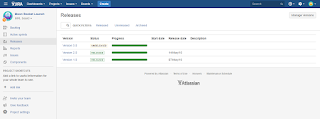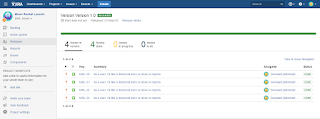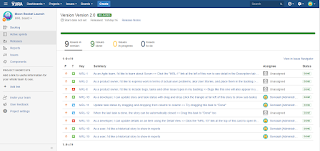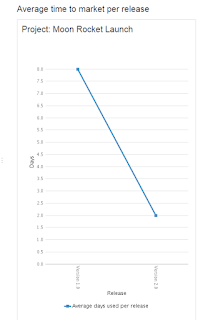I was playing around with RestTemplate, and it seems like a nice way to make REST calls. It also allows for easy handling of basic HTTP authorization.
Just add the username and password to the header:
For GET requests thats about all you need. A simple call can be made like this:
POST request are not very much more complicated:
The entire code looks like this:
Download the code and tests from github: https://github.com/somaiah/restTemplate
Just add the username and password to the header:
String plainCreds = username + ":" + password;
byte[] base64CredsBytes = Base64.getEncoder().encode(plainCreds.getBytes());
String base64Creds = new String(base64CredsBytes);
HttpHeaders headers = new HttpHeaders();
headers.add("Authorization", "Basic " + base64Creds);
For GET requests thats about all you need. A simple call can be made like this:
HttpEntity<?> requestEntity = new HttpEntity(httpHeaders);
return restTemplate.exchange(url, HttpMethod.GET, requestEntity, String.class);
POST request are not very much more complicated:
httpHeaders.setContentType(MediaType.APPLICATION_JSON);
HttpEntity<String> requestEntity = new HttpEntity<String>(createIssueJSON, httpHeaders);
return restTemplate.exchange(url, HttpMethod.POST, requestEntity, String.class);
The entire code looks like this:
import org.springframework.http.*;
import org.springframework.web.client.RestTemplate;
import java.util.Base64;
public class Application {
private static final String username = "user@domain.com";
private static final String password = "password";
private static final String jiraBaseURL = "https://jira.domain.com/rest/api/2/";
private RestTemplate restTemplate;
private HttpHeaders httpHeaders;
public Application() {
restTemplate = new RestTemplate();
httpHeaders = createHeadersWithAuthentication();
}
private HttpHeaders createHeadersWithAuthentication() {
String plainCreds = username + ":" + password;
byte[] base64CredsBytes = Base64.getEncoder().encode(plainCreds.getBytes());
String base64Creds = new String(base64CredsBytes);
HttpHeaders headers = new HttpHeaders();
headers.add("Authorization", "Basic " + base64Creds);
return headers;
}
public ResponseEntity getIssue(String issueId) {
String url = jiraBaseURL + "issue/" + issueId;
HttpEntity<?> requestEntity = new HttpEntity(httpHeaders);
return restTemplate.exchange(url, HttpMethod.GET, requestEntity, String.class);
}
public ResponseEntity createIssue(String key, String summary, String description, String issueType) {
String createIssueJSON = createCreateIssueJSON(key, summary, description, issueType);
String url = jiraBaseURL + "issue";
httpHeaders.setContentType(MediaType.APPLICATION_JSON);
HttpEntity<String> requestEntity = new HttpEntity<String>(createIssueJSON, httpHeaders);
return restTemplate.exchange(url, HttpMethod.POST, requestEntity, String.class);
}
private String createCreateIssueJSON(String key, String summary, String description, String issueType) {
String createIssueJSON = "{\"fields\":{\"project\":{\"key\":\"$KEY\"},\"summary\":\"$SUMMARY\",\"description\":\"$DESCRIPTION\",\"issuetype\": {\"name\": \"$ISSUETYPE\"}}}";
createIssueJSON = createIssueJSON.replace("$KEY", key);
createIssueJSON = createIssueJSON.replace("$SUMMARY", summary);
createIssueJSON = createIssueJSON.replace("$DESCRIPTION", description);
return createIssueJSON.replace("$ISSUETYPE", issueType);
}
}
Download the code and tests from github: https://github.com/somaiah/restTemplate










